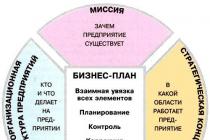Actually, any employee of a company/firm can be a financially responsible person, that is, deal with items (it can be money, documents, office equipment, goods, and much more) that are of some value to the enterprise for which he works.
The main difference from other employees is that such a person bears full or partial responsibility for the values that he has been entrusted with or that he has to use to carry out his activities.
Most often, this category of workers includes:

A detailed list of areas of activity where it can be introduced, as well as the positions of employees who can be materially responsible employees, are enshrined at the legislative level in the Labor Code and the Decree of the Ministry of Labor of the Russian Federation (No. 85 of December 31, 2002).
Obligations of the financially responsible person
 It should be noted that the person responsible for valuables can be both a senior employee and an ordinary (performer).
It should be noted that the person responsible for valuables can be both a senior employee and an ordinary (performer).
According to the Labor Code, an employee who caused direct actual damage by his actions or inaction compensates him in full. He is exempt from compensation for lost profits of the employer. Hence, the mat.responsible employee is obliged:
- Carefully and accurately treat the values transferred to him (or by means of which the employee’s activities are carried out) and do everything in his power to preserve them and prevent possible damage;
- If safety mat. values are threatened by any threat, the employee is obliged to immediately inform his immediate superior or the head of the organization;
- Monitor the status and number of entrusted MCs by keeping records, timely and unscheduled inspections, inventory and audits, be present and take part in the process of accepting values into work.
Details and details depend on the field of activity of the company and the position of the employee responsible for the MC. They are registered in employment contract or in an agreement on liability.
Rights
PTOs have rights that not only protect them, but also allow them to carry out their direct work. Namely, employees have the right to:
- Participate in the discussion and resolution of issues on the implementation of the contract of liability;
- Require the employer or immediate supervisor to create conditions for the fulfillment of duties to ensure the safety of entrusted valuables, to ask for unscheduled inspections, audits, inventories;
- To get acquainted and make agreed adjustments to reports on the balances, the movement of the MC and the results of checks;
- Be directly involved in the acceptance and processing of items for which they need to be responsible;
- Require the employer or immediate supervisor to remove from work employees who impede the fulfillment of the liability agreement.
A detailed list of rights is reflected in contracts and job descriptions and should not contradict the law.
Documents of responsible persons in the organization
There are a number of mandatory documents on the basis of which a MOT can be appointed at an enterprise.
Chief among them - order of appointment mat.responsible employee, which includes a link to a legislative act regulating the possibility of appointing such an employee and directly the full name of the employee himself.
It is drawn up in duplicate and signed by the parties to the agreement. This document can be drawn up both when hiring, and after, when the employee starts working with material assets due to a change in position, duties, or if necessary.
Contracts and orders related to liability in without fail are registered in the ledger, which reflects the dates of compilation, registration numbers, degree of responsibility (full, partial, individual, collective), full name of the responsible employee (in the case of collective responsibility - foreman), his signature and changes.
Also, some organizations have job description, which is drawn up and signed also in two copies. This document is not mandatory, but its presence does not contradict legislative acts.
The document that confirms the fact of the transfer of valuables to the person who is responsible for them is the act of acceptance and transfer. The form of the document is unified and contains information: about the employee transferring and accepting responsibility for the safety of material assets; date, time, number and place of filling; operating or storage conditions; name, quantity and characteristics of values.
The document must also have 2 copies, drawn up and signed directly at the time of transfer of values.
Features of drafting a job description
Due to the variety of positions that may be held liable, the job description is drawn up individually for each employee and reflects the full specifics of the work. It indicates specific actions, special duties, the boundaries of responsibility of each of these employees.
 Thus, The job description of a person contains:
Thus, The job description of a person contains:
- Qualification requirements - age, length of service, education, experience, availability of any special training;
- Enumeration of laws, orders, orders of the head of organization. Forms and methods of accounting (not only specific - for a particular position, but also, for example, accounting). Their employee must know to carry out their activities.
- Rules for the operation of equipment, units, etc.;
- Safety regulations;
- Action plan in case of a threat of loss, damage to valuable property;
- A list of specific employee actions when working with values.
General concepts and abbreviations should not be introduced into the text of the document.
I would also like to say that job description mat. responsible employee- the document of which, in principle, does not exist, because should the instruction refers to a specific position, and all clauses in the contract will be different. An example of one of them (not the most standard one) is below:
briefing
Along with the job description, the instruction of employees occupies an important place.
It can be carried out at a certain frequency set by the employer, and is required for the rational distribution of employees' time and the development and improvement of skills.
It can be done both in writing and orally. During the briefing, innovations and changes related to the activities of employees are reported.
But at the same time, the briefing procedure is not mandatory, since it performs functions similar to the job description.
Reporting
In order to control the activities of a responsible employee, various forms of reporting are mandatory at the enterprise.
The reporting period and deadlines for the submission of documents are set by the head of the enterprise and depend on the need to update information on material values and volumes and the type of activity of the organization. The responsible person can inform his management about the movements of the things entrusted to him daily, once a week / month / quarter, etc.
All changes and movements of material assets are recorded in writing and executed in the form of a document. It contains:
- general information- details of the organization, reporting period, report number, etc.;
- Information about the entrusted material assets at the beginning of the period - amounts, prices, accompanying documents and etc..
- Information about the entrusted material assets at the end of the period.
- The result is the balance (of goods, things, documents, banknotes and other valuables) and documents confirming the movement of these valuables (incoming and outgoing cash orders, commodity and consignment notes, etc.).
The report is drawn up in 2 copies and signed mat. responsible person.
The data entered in writing are compared with the attached documents.
 Accounting for fixed assets for which a person is responsible is carried out using:
Accounting for fixed assets for which a person is responsible is carried out using:
- Inventory list of fixed assets;
- accounting journal;
- Book of accounting of material assets;
- Accounting cards for material assets;
- Other documents depending on the specifics of the position held.
Forms of this documentation can be found in the Labor Code and Decrees of the Government of the Russian Federation.
When checking and identifying a lack of fixed assets or their damage, a person who has signed an agreement on full liability can not only receive a reprimand with entry in a personal file, but also be suspended or dismissed. In this case, the damage to the employee will be fully compensated. The degree of punishment depends on the degree of guilt of the employee.
Another very important document- This receipt of a financially responsible employee, which is compiled according to the approved form (P - 52).
It is filled in and signed by the employee personally before the start of the inspection, audit, inventory and is proof that there are no unaccounted for money, documents and valuables, and all the rest are included in the report.
Conclusion
The employees in charge of things do very important role in the activities of the organization, since the coherence, accountability and quality of work depend on them. Therefore, it is important to follow all the rules and recommendations for the appointment, execution and organization of the activities of responsible persons.
Every leader in an organization wants employees to work responsibly. It is possible to make an employee liable simply by law. financially responsible. Chapter 39 is dedicated to this. Labor Code RF.
There are several types of legal liability, and one of them is the material liability of the employee to the employer - this is the obligation of the employee to compensate the employer for the direct actual damage caused through the fault of the employee (part 1 of article 238 of the Labor Code).
Existence of direct actual damage
As already mentioned, the organization must suffer direct actual damage (part 2 of article 238 of the Labor Code of the Russian Federation). This is a real decrease or deterioration in the condition of the employer's cash assets. It is also the need for him to incur expenses or excessive payments for “correction of the situation” - for the acquisition, restoration of property or for compensation for damage caused to third parties (in relation to property that belongs to third parties, but is with the employer, and he is responsible for it contract or law).
Employee misbehavior
The behavior of the worker, as a result of which the damage was caused, was unlawful. That is, the employee violated job description, rules work schedule and internal regulations, did not comply with safety precautions and other rules established by law or internal documents of the organization.
The damage was caused by the unlawful act of the employee
A prerequisite for bringing an employee to liability is the existence of a causal relationship between the actions of the employee and the infliction of direct actual damage. In this case, two necessary conditions must be observed:
- the illegal action of the employee precedes the moment of harm;
- harm to the employer is caused precisely by the unlawful actions of a particular employee.
Employee fault
The material liability of the employee arises only if the employee is at fault (part 1 of article 233 of the Labor Code of the Russian Federation). The concept of guilt is divided into intent and negligence. In case of intentional damage to the property of the employer or third parties, the employee is aware of what his actions will lead to, and in case of negligence - no, although he should.
EXAMPLE: Chief Accountant who has transferred a portion of the firm's proceeds to his own account knows that he is hurting the firm he works for. And the cleaner who, while wiping the table, broke the monitor, did not know that this would happen, although she should have been careful.
There are circumstances that exclude the fault of the employee and release him from liability.
First, this action force majeure.
EXAMPLE: The driver was hit by hail, which shattered the windshield of the car. Of course, the actions of force majeure include earthquakes, wars, uprisings, hurricanes, and all other natural and social phenomena which the employee can neither influence nor prevent them.
Secondly, the employer's failure to fulfill the obligation to ensure the conditions for the storage of property entrusted to the employee.
EXAMPLE: not only the employee who, under the contract, is responsible for its contents has the keys to the safe.
Thirdly, the normal economic risk, namely:
- there is no other way to achieve the desired result;
- all reasonable steps have been taken to prevent harm;
- the object of risk is property, not human life and health.
Liability: partial and full
The liability of the employee to the employer may be partial or full. The employee is liable for the full actual damage caused by him within the limits of his average monthly earnings, unless otherwise provided by the Labor Code or other federal law(Article 241 of the Labor Code of the Russian Federation). This is a partial responsibility.
The full liability of the employee consists in his obligation to compensate the direct actual damage caused to the employer in full (Article 242 of the Labor Code of the Russian Federation), and this can be a very impressive amount. Therefore, in addition to the conditions set out above, for full liability, special conditions must be “fulfilled” (Article 243 of the Labor Code of the Russian Federation).
- full financial responsibility is assigned to the employee by the Labor Code or other federal law;
- a special written contract was concluded with the employee;
- the employee was given the appropriate material values;
- the employee made a shortage of these material assets;
- the damage is intentional. It should be noted that in order to bring the employee to full liability for harm caused to the employer intentionally, the institution of a criminal case or a case administrative offense not necessary;
- the damage was caused in a state of alcoholic, narcotic or toxic intoxication. The form of guilt in this case does not matter. An employee who caused harm to an employer in a state of alcoholic, narcotic or toxic intoxication will bear full financial responsibility, regardless of whether he wanted to cause this harm or did not even suspect what his actions would lead to;
- if the damage was caused by the employee's criminal actions, as evidenced by a court verdict (not a decision to initiate a criminal case), which indicates that it was his illegal actions of the employee that led to the damage;
- if the damage was caused as a result of an administrative offense established by the relevant state body;
- if the damage was caused as a result of disclosure of information constituting a legally protected secret (official, commercial or otherwise). In this case, the employer must prove that the information disclosed by the employee constituted a legally protected secret. For example, he can present the Confidentiality Agreement concluded with the counterparty, or the Regulation on commercial and official secrets adopted by the organization;
- if the damage is caused by the employee not in the performance of the employee job duties(regardless of when it happened - during work or personal time).
Responsibility for the list
In order to bring an employee to full liability for the lack of valuables entrusted to him, it is necessary that, under an employment contract, he fill a position that allows him to be held fully liable for the full actual damage caused. This list of positions and professions was approved by the Decree of the Ministry of Labor of Russia dated December 31, 2002 No. 85 (hereinafter referred to as the List).
An employee may also bear full financial responsibility on the basis of a one-time document, for example, an invoice. It must be said that, according to one-time documents, those employees whose position or work performed are not included in the List usually bear full financial responsibility.
Individual and collective responsibility
The financial responsibility of employees can be individual and collective.
Individual responsibility
Full individual liability applies to a specific worker who:
- material values are transferred, and it is he who is entrusted with the function of ensuring their safety;
- instructed to store (process, sell, etc.) the transferred valuables, and for this he is provided with a separate isolated room and a place for storing valuables (for example, a safe);
- must independently report to the accounting department for the values \u200b\u200baccepted by him under the report.
Collective responsibility
Article 245 of the Labor Code is "responsible" for collective (team) responsibility. It can be introduced in an organization in the event that employees jointly perform certain types works related to the storage, processing, sale, transportation and other use of the values transferred to them. In order to introduce collective (team) responsibility in organizations, it is necessary to issue an order from the head of the organization and bring it to the attention of the team (team). Then the brigade should sign an agreement on full liability. At the same time, it should be borne in mind that this should be an agreement, one for all - at the end of the agreement there must be signatures of all employees of the team.
If the organization has collective responsibility, the employer should consider the following:
- the foreman is appointed by order of the director of the organization, but taking into account the opinion of the team. Consent must be obtained in writing. The majority of the workers of the brigade must vote "for";
- it is possible to accept a new employee into an already created team only with the consent of the team (in the manner similar to that described above);
- if the head (foreman) changes in the team or most of the employees leave (leave), the contract on full liability must be renegotiated by conducting an inventory;
- a member of the team may be released from full liability, but subject to evidence of the absence of guilt (for example, was on vacation at the time of the incident)
- if a team of workers compensates the employer for damage voluntarily, then the degree of guilt of each is determined by an agreement between the team (team) and the employer, and if compensation for damage goes through the court, then the degree of guilt will be determined by the judge.
A separate contract is required
Despite the fact that the concept of material liability is considered within the framework of labor law, agreements on the full material liability of employees must be concluded with them separately from employment contracts. If the employer simply includes the obligation to bear full financial responsibility in the text of the employee's employment contract, then this provision will not apply. After all, the presence of an appropriate written contract is one of the main conditions for the imposition of liability. At the same time, the employee must be at least 18 years old and serve or use directly monetary, commodity values or other property (Article 245 of the Labor Code of the Russian Federation).
But the employment contract must contain a clause stating that the employee performs work in accordance with the List and bears full financial responsibility, about which an appropriate contract must be concluded.
It is especially important to conduct an inventory before concluding an agreement on full liability in order to find out what values the employee or team will be responsible for. An inventory should also be carried out in connection with holidays of financially responsible employees, sick leave and dismissal.
The financially responsible employee must know ...
Material liability is assigned to employees only for the property that he received according to the primary accounting document.
In addition to contracts, such an employee must have a clear job description.
Steps to collect
In order to start recovering damages from an employee or a group of employees, the employer must follow a certain sequence of his actions.
|
Step 1 |
Conduct an inventory of property in the organization, identify lost or damaged property |
||
|
Step 2 |
Schedule an internal investigation |
Establish a Commission of Inquiry |
Establish causes of loss or damage to property |
|
Step 3 |
Request written explanations of the causes of damage from the financially responsible person |
If the material person refuses to give written explanations, draw up an act about this (Article 247 of the Labor Code of the Russian Federation) |
|
|
Step 4 |
Determine the amount of damage (based on actual losses due to market prices on the day the damage occurred, but not lower than the value of the property according to accounting data (including depreciation) (Article 246 of the Labor Code of the Russian Federation) |
||
|
Step 5 |
If the damage was caused by several employees, determine the degree of fault, the type of liability limit for each of them individually |
||
During the audit, as well as after its completion, the employee or his representative should be allowed to familiarize himself with its materials. If they deem it appropriate, then, according to the rules of Articles 386,391 of the Labor Code, they can appeal against both the findings of the audit and its materials.
How to claim damages
Damage can be recovered from the employee both without going to court and in court.
If the damage does not exceed the average monthly earnings of the employee, it can be recovered from him without going to court. To do this, the head must issue an appropriate order (in any form).
It happens that the employee agrees to compensate for the damage voluntarily. In this case, the organization can provide him with installments. But the employee must write a written obligation to compensate for the damage and indicate the period in which he plans to do this.
If a month has passed since the damage was caused or the amount of damage exceeds the average monthly salary of the employee, and it was not possible to “agree amicably”, the employer may apply with statement of claim on bringing the employee to liability in court. As mentioned above, in this case, a reduced limitation period is applied - one year (Article 392 of the Labor Code).
If the employee quit without reimbursing the damage, the employer can also go to court (Article 248 of the Labor Code).
Source: Digital catalogue branch department in the direction of "Jurisprudence"
(libraries of the Faculty of Law) Scientific Library them. M. Gorky St. Petersburg State University
Starodubskaya, E. N.
The concept of a responsible worker in the Soviet
labor law /E. N. Starodubskaya.
//Jurisprudence. -1980. - No. 3. - S. 49 - 54
- The concept of a responsible worker in Soviet labor law.
Starodubskaya, E. N.E. N. STARODUBSKAYA,
PhD in Law
THE CONCEPT OF THE RESPONSIBLE WORKER IN THE SOVIET
LABOR LAW
The current labor legislation operates with the concept of "responsible employee" in two cases - when we are talking on the establishment of a monthly probationary period when hiring and when imposing disciplinary responsibility in the order of subordination. In the first case, this term is used in the Labor Code of the RSFSR (Article 22), in the second - in the Regulation on disciplinary responsibility in the order of subordination, approved by the decree of the All-Russian Central Executive Committee and the Council of People's Commissars of the RSFSR of March 29, 1932. However, neither one nor the other act explain this concept, do not give a list of persons who should be considered responsible employees, do not formulate the criteria from which to proceed when delimiting this category of employees. The concept of a responsible worker was formed historically. It received regulatory approval in the 1920s. Thus, in the resolution of the People's Commissariat of Labor of the USSR dated March 31, 1925, it was noted that wages at the rate of responsible employees should be paid to those political workers who take a responsible part in the cause of party, trade union, Soviet, economic and cooperative construction and are responsible not only for the technical fulfillment of the duties entrusted to them, but are also responsible for the political and ideological implementation of the duties entrusted to them. 1 The number of responsible, political workers included: chairmen of executive committees (district, city, district), heads of departments of executive committees, judges, prosecutors, heads of enterprises, institutions, organizations. executive editors of all-union, republican (union and autonomous republics), regional newspapers, etc. 2 It should be noted that even then the category of responsible employees covered a limited circle of people: for this purpose, a list of positions assigned to this category was established.
Initially special legal regulation work of responsible workers concerned only the issues of their wages. In general, the status of this category of employees was regulated by social norms contained in party, trade union charters and other documents. Over time, the scope of legal regulation were; includes questions relating to other parties labor activity responsible workers. For example, for this category, an administrative procedure for the consideration of labor conflicts was established. In a private explanation of the Plenum Supreme Court RSFSR dated February 7, 1927 on the judicial procedure for the reinstatement of persons incorrectly dismissed from service, it was noted: “taking into account the special nature of the work of employees public institutions And state enterprises whose work requires not only proper qualifications, but also special trust in this person, as well as persons receiving positions of responsible political workers, to recognize that the complaints of these persons about improper dismissal should be considered only in an administrative manner. 3 The circle of persons subject to this clarification corresponded to the list of positions provided for by the already mentioned decree of March 31, 1925 on the payment of responsible political workers (and later additions to it). The administrative procedure for considering complaints on the listed issues also extended to persons of senior administrative and technical personnel of state institutions and enterprises enjoying the right to hire and dismiss. 4
Along with the introduction of an administrative (superior in the order of subordination bodies and persons) procedure for considering labor disputes the list of responsible employees was specified. This category included: a) heads of enterprises, institutions, organizations and their deputies; b) leaders structural divisions the indicated bodies (heads of workshops, foremen, etc.); c) elected employees holding paid positions in the organization that elected them; d) other persons (for example, executive editors of periodicals, fire chiefs in enterprises, chiefs of fire departments and teams, etc.). 5 The dominant category in this list was executives, which is also typical for subsequent lists. So, adopted on October 18, 1929, the resolution of the People's Commissariat of Labor of the USSR on the procedure for dismissal and reinstatement of responsible employees, whose cases on dismissal and reinstatement were not subject to consideration in the RSC and labor sessions, provided for the introduction administrative order consideration of labor disputes for persons enjoying the right to hire and dismiss in all enterprises, institutions and organizations, as well as for other categories of responsible employees of state, cooperative and public enterprises, institutions, organizations holding positions listed in the three lists. 6
List No. 1 (categories of responsible employees) was general, as it applied to all state, cooperative and public enterprises, institutions, organizations, except for transport and communications. Compared to the above list, it was expanded and consisted of 18 items. 7 In particular, it included such categories of responsible employees as chief and senior accountants of all institutions, enterprises and organizations, heading financial accounting and accounting departments and units; contractors with independent departments or offices; other executives classified as responsible by law.
Lists No. 2 and No. 3 concerned responsible employees of transport and communications enterprises.
In the 30s, the legal regulation of the labor of responsible workers received further development in the legislation on disciplinary responsibility. For responsible employees, disciplinary liability was established in the order of subordination, which was regulated by the decree of the All-Russian Central Executive Committee and the Council of People's Commissars of the RSFSR of March 20, 1932. .9 and consisted of 25 items.
The main group among the categories of responsible employees in this list were also executives of enterprises, institutions and organizations. In addition to them, it included executive editors of periodicals and non-periodicals, their full-time deputies and assistants, executive secretaries of newspaper, magazine, book publishing houses and executive secretaries of editorial offices, technical and sanitary inspectors of departments, tax inspectors, inspectors of organizational departments of the CEC of autonomous republics, regional and regional executive committees and other responsible employees.
The list of responsible employees who bear disciplinary responsibility in the order of subordination has undergone certain changes in connection with the adoption of the Regulations on the procedure for considering labor disputes of January 31, 1957. This Regulation introduced single list categories of employees whose labor disputes concerned both the issues of dismissal, transfer and reinstatement, as well as the imposition of disciplinary sanctions. However, unlike the previous ones, this list did not contain a direct indication that the employees included in it were responsible. The regulation on disciplinary liability in the order of subordination, as before, considered employees falling under this list as responsible.
The legislator, establishing the list of employees whose labor disputes were considered in the order of subordination, proceeded from different criteria. In some cases, such a criterion was the nature of the functions performed (leading, elected, prosecutorial and investigative workers), and in others - a special way of filling positions (professional and teaching staff, employees of research institutions, artists and other creative workers whose positions replaced by competition). If the first by the nature of the functions performed could be recognized as responsible workers, then this in no way applied to the second. With subsequent additions, categories of employees were included in the list mainly by the nature of the functions performed.
The regulation on the procedure for considering labor disputes of May 20, 1974 introduced significant changes in the list of categories of employees whose labor disputes are considered by higher authorities in the order of subordination. The Appendix to the new Regulation contains two lists (instead of the previously existing single list). The basis for the inclusion of certain categories of employees in List No. 2 is a specific way of filling positions (their election to a position by competition) or a specific condition for maintaining a position (positive certification). After all, only in cases where the employees included in List No. 2 are dismissed from work in connection with the recognition of their inadequacy for their position (as a result of attestation or in another established manner) or due to not being elected by competition for new term, they can file a complaint in the order of subordination to higher authorities. If the labor disputes of the employees included in the list No. 2 are caused by their dismissal for some other reason or are not related to the dismissal at all (for example, the imposition disciplinary action), they, in accordance with the Regulations of 1974, cannot be considered in the order of subordination.
Although the criterion for including certain categories of employees in List No. 1 is the nature of the functions performed (this includes, in particular, executive, elected employees holding paid positions in the organization that elected them; prosecutors and investigators; some employees of editorial offices and publishing houses, TASS, radio and television, bodies of the USSR Gosgortekhnadzor system, fish protection, bodies of the system of the main department for foreign tourism; employees of the Main Customs Department, diplomatic workers), these functions are very different in their content. Some relate to the management of an enterprise, institution, organization or their structural units (executives), others are related to the administration of justice, the investigation of crimes and the supervision of the rule of law (judges and prosecutorial and investigative workers), and others to the management of the activities of means mass media(employees of TASS, radio, television, newspaper editors), or with the relations of the Soviet state with foreign states (diplomatic workers) and citizens (employees of the Main Directorate for Foreign Tourism and employees of the Main Customs Directorate); this also includes control functions (employees of the Gosgortekhnadzor system and fish protection workers), etc.
However, the positions included in List No. 1 have a common feature on the basis of which they can be classified as responsible employees - they all involve the performance of functions that the state recognizes as particularly important. The concept of a responsible worker in the form in which it was historically formed in our country does not mean one or another content. labor functions, namely their importance. The same meaning is given to the word "responsible" in a purely semantic sense. 10
Therefore, recognizing the importance of the functions performed as a decisive criterion in the concept of a responsible employee and taking into account that responsibility in the order of subordination is characteristic primarily and mainly of the category of responsible employees, we must come to the conclusion that regulatory framework list No. 1 of Appendix No. 1 to the Regulation on the procedure for considering labor disputes of May 20, 1974 should serve to classify certain employees as responsible employees, although the term “responsible employees” itself is not directly used in it. In this regard, a one-month probationary period for employment should be applied only to those employees who are indicated in this list. It is hardly correct to take a different approach to the concept of a responsible employee when resolving issues of disciplinary responsibility in the order of subordination and the duration of a test when hiring.
In Soviet literature, other points of view have been expressed regarding the concept of a responsible worker.
According to one of them, “when deciding whether an employee is a responsible employee, one should be guided by the Unified nomenclature of positions of employees, approved by the Decree of the State Labor Committee of September 9, 1967.” 11 At the same time, employees classified by the Unified Nomenclature as managers or specialists are recognized as responsible employees. 12 Although this point of view has received some recognition, it was formulated in the form of a postulate and has not received any serious substantiation.
Why, then, when referring this or that employee to the category of responsible employees, one should be guided precisely by the Unified nomenclature of positions of employees? None of the scientists who share this point of view answers this question. There is no answer in the explanation of the Judicial Collegium for Civil Cases of the Supreme Court of the USSR. Supporters of the considered point of view raise another question - which of the three categories of employees provided for by the Unified nomenclature of positions of employees can be classified as responsible employees. Since it is clear that technical performers do not fall under this concept, it is concluded that the other two categories form it. But after all, the list of specialists in the Unified Nomenclature of Official Positions is extremely wide, it covers not only employees whose functions are undoubtedly essential for the state (for example, people's judge, prosecutor, investigator, envoy, embassy adviser, diplomatic courier, etc.), but and a number of workers who cannot be called responsible workers in this sense (for example, a librarian, bibliographer, merchandiser, economist, accountant, etc.).
The unified nomenclature divides employees into three categories not according to the degree of importance of the functions they perform, but according to the nature of their work, and, perhaps, this is precisely why it does not use the concept of "responsible worker".
Attention is also drawn to the fact that in judicial practice in criminal cases, when defining the concept of “official in a responsible position”, the Unified Nomenclature of Positions of Servants is not referred to. The decision of the Plenum of the Supreme Court of the USSR of July 31, 1962 stated that “the issue of the responsible position of an official accused of taking a bribe is decided by the court depending on the specific circumstances of the case, taking into account the nature of the position held and the importance of the functions performed by him (representatives of the authorities, executives of enterprises, institutions and departments, operational workers controlling and auditing bodies, etc.). 13 Of course, the criminal law concept of an official occupying a responsible position is not identical to the concept of “responsible employee” used in labor law, but when deciding on the responsible position of an employee (after all, a responsible employee is nothing more than an employee occupying a responsible position!) in labor law, the same criterion should be applied as in criminal law.
A different point of view was expressed by V. I. Turanov, who identifies the concept of responsible employees with the commanding staff of the structural divisions of enterprises and institutions (heads of services and departments of plant management, heads of workshops, foremen, senior foremen, etc.), excluding the category "leading workers" from it (he includes only those officials whose activities are carried out on the scale of the USSR, Union or autonomous republic, territory, region, national district, city, district, enterprise, institution, organization). In his opinion, responsible employees, unlike executives, “do not directly possess the administrative powers of the governing bodies or exercise them, but in a specific area and in other forms. The official powers of these officials are determined by the tasks of this governing body, the volume and nature of the work performed. Therefore, such persons have much less official rights and obligations than those of senior employees. 14 Undoubtedly, in terms of their competence and legal status, the heads of structural divisions of enterprises (institutions, organizations) differ from the heads of these enterprises, but both categories of officials perform managerial functions (albeit in different volumes and in different forms) and are included in the Unified nomenclature of positions of employees in the category of "managers", as well as in List No. 1 of the Appendix to the Regulations on the Procedure for Considering Labor Disputes of 1974.
Of course, from the point of view of bringing these two categories of workers to responsibility by the organs of people's control, there are important differences, but they do not directly relate to the concept of responsible workers. To assert that the highest group of leaders are not responsible workers means to contradict both the logical meaning of the term "responsible worker" and the development of this concept in the history of Soviet legislation.
1 See: News of the NKT USSR, 1925, No. 17-18.
2 See: Regulations on the Remuneration of Remuneration of Responsible Political Workers of November 25, 1929 (Izvestia of the NKT USSR, 1929, No. 48-49); Circular of the NCT of the USSR of December 10, 1929 No. 374 On the procedure for implementing the Regulations of November 251, 1929 (Appendix to No. 48-49 of the News of the NCT of the USSR for 1929).
3 See: News of the NKT USSR, 1927, No. 24.
4 See: Decree of the Plenum of the Supreme Court of the RSFSR of May 16, 1927 “On the reinstatement by a court order of persons incorrectly dismissed from service” (Izvestiya NKT USSR, 1927, No. 29).
5 Decree of the NCT of the USSR of March 16, 1929 “On the procedure for dismissal and reinstatement of responsible employees, whose cases on dismissal and reinstatement are not subject to consideration in the RCC and labor sessions” (see: Izvestiya NKT USSR, 1929, No. 15 -16).
6 See: News of the NKT USSR, 1930, No. 1-2.
7 See: Appendix No. 1 to art. 1 of the resolution of the CNT of October 18, 1929 (Izvestiya of the NCT of the USSR, 1930, No. 1-2)
8 See: SU RSFSR, 1932, No. 32, art. 152.
9 See: News of the NKT RSFSR, 1932, No. 24
10 Explanatory dictionaries of the Russian language explain the word “responsible” as “associated with responsibility, very serious, important” (Dictionary of the modern Russian literary language. M., 1959, v. 8, p. 1273-1274), “essentially important, very serious ”(Ozhegov S, I. Dictionary of the Russian language. M., 1973, p. 427).
11 Korshunov Yu. N., Lifshits R. 3., Rumyantseva M. S. Soviet labor legislation. M., 1976, p. 27.
12 See ibid. The Judicial Collegium for Civil Cases of the Supreme Court of the USSR gave the same answer to requests from courts and organizations regarding the application of the provisions labor law concerning the probationary period (see: Bulletin of the Supreme Court of the USSR, 1977, No. 4, p. 41).
13 Bulletin of the Supreme Court of the USSR, 1962, No. 5, p. 11. The same provision was reproduced in 1976 in the decision of the Presidium of the Moscow City Court (see: Bulletin of the Supreme Court of the RSFSR, 1976, No. 12, p. 9).
14 See: Turanov V. I. Bringing to responsibility by the bodies of people's control. M., 1972, p. 12-14
Information updated:25.11.2003
Related materials:| Books, articles, documents
Responsible employee in practical psychology - the level of professional and personal development. See Business Responsibility Line
It differs from a Specialist not in a set of knowledge (a performer or a specialist may have more knowledge), but in courage, determination, will - to do what is needed as a result. The desired result will be! Someone will not be - we will find, the people withered - we will stump or motivate, we are confused - we will figure it out; such an employee always has enough determination and will to get down to business and bring it to the result.
The responsible employee makes sure that the work is brought to the result. It is personally important to him that the client received what was required and was satisfied. If he made a report for the boss, it is important for him not just to hand over the report, he will try, if necessary, to make sure that the boss does not accidentally forget this report and does not lose it, so that everything goes into business.
"I agree to load a dump truck if we don't take it all to a landfill. We take it to people!"
For a responsible employee, the surrounding people, employees, boss and clients, are not strangers, but their own. This is where the responsible employee differs from.
The responsible employee knows perfectly well that the assigned issue must be closed. This means that it is necessary not only to fulfill the assignment, but also to report on the execution and receive confirmation that the manager considers the issue closed.
For him, the question is natural: Is there anything else that needs to be done? Is there anything I can do to help?
In relationships - the unconditional priority of a conversation with a leader (or other seniors) over conversations with equals.
If the manager is not satisfied, the employee does not make excuses and does not convince the manager, but, by asking, clarifies the essence of dissatisfaction and thinks how best to fix it.
Priorities and motivation
Can (dare) prioritize work.
More often a careerist. Drawn.
Responsible Officer and Leader
The next step in the development of business responsibility is the level of the manager (Middle Manager). For the majority of people who have reached the level of a Responsible employee, the line separating them from the level of a Manager turns out to be insurmountable... See Transition to the level of a Manager
What qualities of employees would you pay attention to? And what is your team like now? What qualities of employees make them important and indispensable in the team? And are you an effective worker yourself?
The team needs competent, responsible people whose hands grow from where they need to. To determine if your employees fall into this category, we wrote this article.
So, 10 qualities of an effective employee.
1. Reliability
You can count on him and you know that he will certainly fulfill the task assigned to him, no matter what it costs him. He does not have jambs (or their number is negligible). He acts consistently, without throwing and hesitation. You know that he will work equally well all the time, and not just when the muse comes to him.
2. Constructive communication
An effective employee can communicate his thoughts and ideas clearly and accurately. He communicates with colleagues on the merits, respects both the interlocutors and their participation in teamwork. He can be instructed to convey important information to others and at the same time be sure that everyone will understand everything as it should.
3. Ability to listen
I listen, but I do not hear - this is a disease of many. An effective worker is distinguished by the fact that he does not catch crows at work and carefully listens to the orders of his superiors. This is an important quality, without which it will not be possible to work effectively. He does not enter into an argument just to show that he is the smartest around. Does not challenge someone else's point of view until the interlocutor finishes his thought. Able to adequately respond to criticism in his address.
4. Activity
A good employee is active and proactive. Not only does he get the job done, but he can also contribute constructive ideas along the way. Never extinguished sitting idle while others are working. Voluntarily volunteers to perform a particular task, without waiting for the finger of the leader to point to him.
5. Sociability
6. Ability to work in a team
To achieve success, the team must act as a single organism. An effective employee is able to work in a team and achieve the goals set for the team. He can interact with colleagues.
7. Flexibility b
The team often faces changing conditions or creates the preconditions for change itself. Effective workers adapt easily to change. They don't complain, they don't fall into stressful condition due to the fact that something has changed at work or a new boss has come. An effective worker is also able to be flexible in interpersonal communication change your point of view if it is wrong.
8. Responsibility
He feels responsible not only for himself, but also for his team, for the results of his work. Does everything possible to ensure that the work brings the maximum return, and requires the same from colleagues.
9. Ability to solve problems
Every team faces various problems. Effective employees do not shy away from difficulties, at any moment they are ready to take on the solution of the problem that has arisen. They do not ignore the problem, do not look for the guilty, do not postpone the solution of the problem until later. They discuss the situation with colleagues and actively interact with them to develop a plan for solving the problem.
10. Respect for people
Effective employees treat their colleagues with respect, as well as their superiors or subordinates. In short, to all people, regardless of their status. They have a sense of humor that does not interfere with their professional activity.
And finally. An effective worker doesn't have to be a leader who flaunts his particular style or personality. He can be quiet, but not passive. Its main task is effective work in the form of the result obtained, and not in the process of obtaining it.














